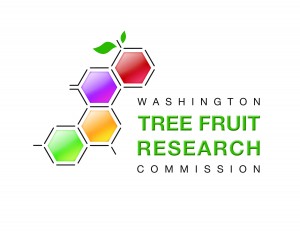Written by Tory Schmidt, Horticultural Associate, WTFRC, Wenatchee. March 4, 2017.
After a long, tough winter, the temperatures are finally creeping up and the snow is starting to melt. Most of us still have a lot of pruning to catch up on and more than a few of us will be trying to figure out how to keep the pruning crews out of the way of the sprayer in the coming weeks. Spring is always very busy, so we need to remind ourselves to put some thought into the chemical thinning programs which are so integral to the profitability of our operations.
While we don’t have any new thinning products available this year, research at the Washington Tree Fruit Research Commission (WTFRC) is on-going with a more potent lime sulfur formulation which may offer the same effects as current products, but in a more compact/lighter weight package. Additionally, we are very encouraged by our work with metamitron, a sugar beet herbicide which has been registered as a postbloom thinner of apple in several countries around the world. Metamitron has already proven to be very effective in WA research trials, and with any luck, we may have a new product labeled for our market in 4-5 years. Detailed information on recent crop load management trials and all other WTFRC-funded research is available on our searchable report database (https://treefruitresearch.com/searchable-database) or with use the search function of the WSU Tree Fruit Web Portal (https://treefruit.wsu.edu/).
There are new crop load management tools available to apple growers this spring in the form of predictive models. After 3 years of successful beta-testing, the pollen tube growth models for ‘Granny Smith’ and ‘Honeycrisp’ have been released for public use for the upcoming 2017 thinning season. Based on ambient conditions tracked by nearby WSU AgWeatherNet (AWN) stations, these models predict how long it takes an apple flower to become fertilized after it has been pollinated. With this information, growers can make more strategic decisions about the timing of their chemical bloom thinning applications, managing their fruit set with increased precision and reliability. These newly released models are free to use and can be found alongside others for ‘Golden Delicious’, ‘Fuji’, ‘Gala’, and ‘Cripps Pink’ in the “Crop Models” section of the AWN website (http://weather.wsu.edu/).
We are also pleased to be working with Dr. Vince Jones, Director of WSU’s Decision Aids System (https://www.decisionaid.systems/) on three new predictive models which will help facilitate management of crop load, as well as pests and diseases. First, we are collaborating with Dr. Gloria deGrandi-Hoffmann (USDA-ARS; Tucson, AZ) to develop a model which predicts honeybee foraging activity based primarily on light, temperature, and wind conditions during bloom. This model will provide a simple 1-10 rating to reflect how well your hives perform on a daily basis at various sites, as well as forecasting foraging activity for the next 3 days. Dr. Jones is also re-analyzing our bloom phenology and fruit growth data collected over several years around Central WA. Our goal is to develop those data into separate models that will predict: 1) Bloom development from green tip through petal fall and 2) Fruit growth (diameter) from June drop to harvest for ‘Gala’, ‘Red Delicious’, and ‘Cripps Pink.’ We also plan to start collecting data this season on ‘Golden Delicious’, ‘Fuji’, and ‘Honeycrisp’ so that we might be able to offer similar fruit growth models on those cultivars in 3-4 years. The fit and reliability of these models are encouraging thus far, such that growers might be able to use them with confidence to help figure out questions like “When will my flower buds start to bloom?” or “What will be the size distribution of my fruit when I get to harvest this year?” All three of these models in development (Bee Foraging, Bloom Phenology, and Fruit Growth) will be available to approved beta-testers on WSU-DAS this year, and if all goes well, they will be released for general public use in 2018.
Please take advantage of these final days of winter to put some time and thought into your battle plans for chemical thinning and overall crop load management this year. While you wait for the snow to melt, you can get online and check out the Pollen Tube Growth Model on AWN. If you are a beta-tester for DAS, keep your eyes peeled for the bee foraging, bloom phenology, and fruit growth models as they become available in the coming weeks and months. As always, BE AGGRESSIVE with your chemical thinning programs – if you aren’t worried that you dropped the whole crop in May, you’re probably not going to be very happy at harvest. Best wishes for a great growing season!
Contact
 Tory Schmidt
Tory Schmidt
Horticultural Associate
WTFRC, Wenatchee
509-665-8271
tory@treefruitresearch.com

